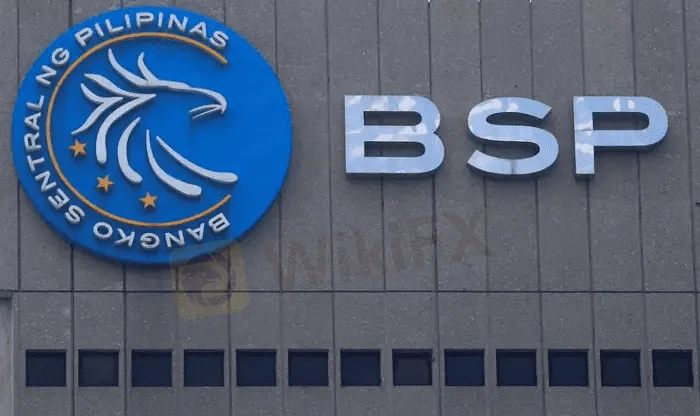简体中文
繁體中文
English
Pусский
日本語
ภาษาไทย
Tiếng Việt
Bahasa Indonesia
Español
हिन्दी
Filippiiniläinen
Français
Deutsch
Português
Türkçe
한국어
العربية
Philippine central bank hastens interest rate rise, ready for more action
Abstract:The Philippine central bank on Thursday raised its benchmark interest rates by 75 basis points in a surprise off-cycle move, and signalled its readiness to take further policy action to contain broadening inflationary pressures, its governor said.

The Philippine central bank raised its key interest rates by 75 basis points in a surprise move on Thursday and kept the door open for further tightening as it rushed to contain broadening inflationary pressure and rescue a faltering peso.
Implemented outside the regular policy-meeting cycle, the tightening move was the most aggressive by the Bangko Sentral ng Pilipinas (BSP) since the central bank shifted to an inflation-targetting approach in 2002.
The rise in interest rates accompanied policy shifts effected by other central banks in Asia and elsewhere on Wednesday and Thursday. They included one in Singapore that was also an off-cycle move.
In the Philippines, the rate on the key overnight reverse repurchase facility rose to 3.25%, BSP Governor Felipe Medalla said in a statement.
“In raising the policy interest rate anew, the Monetary Board recognized that a significant further tightening of monetary policy was warranted by signs of sustained and broadening price pressures amid the ongoing normalization of monetary policy settings,” Medalla said.
The rates on the BSPs overnight deposit and lending facilities were also raised by 75 basis points, to 2.75% and 3.75%, respectively.
No such move was expected on Thursday because the BSP did not have a regular policy meeting scheduled until Aug. 18. The central bank previously raised interest rates by 25 basis points in May and again in June.
Medalla said the BSP would still hold the Aug. 18 meeting, and policy moves remained data-dependent.
Inflation surged to the highest level in nearly four years in June, and is widely expected to remain elevated, pushing the full-year average beyond the target band of 2% to 4%.
Finance Secretary Benjamin Diokno said the economy remained robust and could thus absorb Thursdays interest rate rise. It would remain supported by the easing of COVID-19 restrictions and structural reforms, he added.
Peso recovers
The Philippine peso, which had hit a record low early this week versus the U.S. dollar, recovered some lost ground and was last up 0.3%.
The peso is the worst-performing currency in Southeast Asia this year as the greenback continues to strengthen on expectations for faster Federal Reserve policy tightening.
The Fed is seen stepping up its tightening campaign with a supersized 100 basis point rate hike this month after a report showed inflation racing at four-decade highs.
The BSPs move was meant to support or at least stabilise the peso exchange rate, said Michael Ricafort, economist at Rizal Commercial Banking Corp in Manila.
A weak peso adds further pressure on inflation, threatening to derail recovery of the consumption-driven domestic economy.

Disclaimer:
The views in this article only represent the author's personal views, and do not constitute investment advice on this platform. This platform does not guarantee the accuracy, completeness and timeliness of the information in the article, and will not be liable for any loss caused by the use of or reliance on the information in the article.
Read more

Good News Malaysia: Ready for 5% GDP Growth in 2025!
Malaysia's economy is on track to sustain its robust growth, with GDP expected to exceed 5% in 2025, according to key government officials. The nation's economic resilience is being driven by strong foreign investments and targeted government initiatives designed to mitigate global economic risks.

Tradu Introduces Tax-Efficient Spread Betting for UK Traders
Tradu’s introduction of tax-efficient spread betting and groundbreaking tools like the Spread Tracker signals a new era of accessible, competitive, and innovative trading solutions for UK investors.

Trading Lessons Inspired by Squid Game
The popular series Squid Game captivated audiences worldwide with its gripping narrative of survival, desperation, and human nature. Beneath the drama lies a wealth of lessons that traders can apply to financial markets. By examining the motivations, behaviours, and strategies displayed in the series, traders can uncover valuable insights to enhance their own approach.

How Far Will the Bond Market Decline?
Recently, the yield on the U.S. 10-year Treasury bond reached a new high since April 2023, soaring to 4.7%.
WikiFX Broker
Latest News
SQUARED FINANCIAL: Your Friend or Foe?
Big News! UK 30-Year Bond Yields Soar to 25-Year High!
High-Potential Investments: Top 10 Stocks to Watch in 2025
Why Is Nvidia Making Headlines Everywhere Today?
Discover How Your Trading Personality Shapes Success
US Dollar Insights: Key FX Trends You Need to Know
FINRA Charges UBS $1.1 Million for a Decade of False Trade Confirmations
BI Apprehends Japanese Scam Leader in Manila
Bitcoin in 2025: The Opportunities and Challenges Ahead
Join the Event & Level Up Your Forex Journey
Currency Calculator






